Cinematographer Allen Daviau, the five-time Oscar nominee whose collaborations with such directors as Steven Spielberg, Albert Brooks, Peter Weir and Barry Levinson would earn him the American Society of Cinematographers’ Lifetime Achievement Award in 2007, passed away in Hollywood on Wednesday, aged 77.
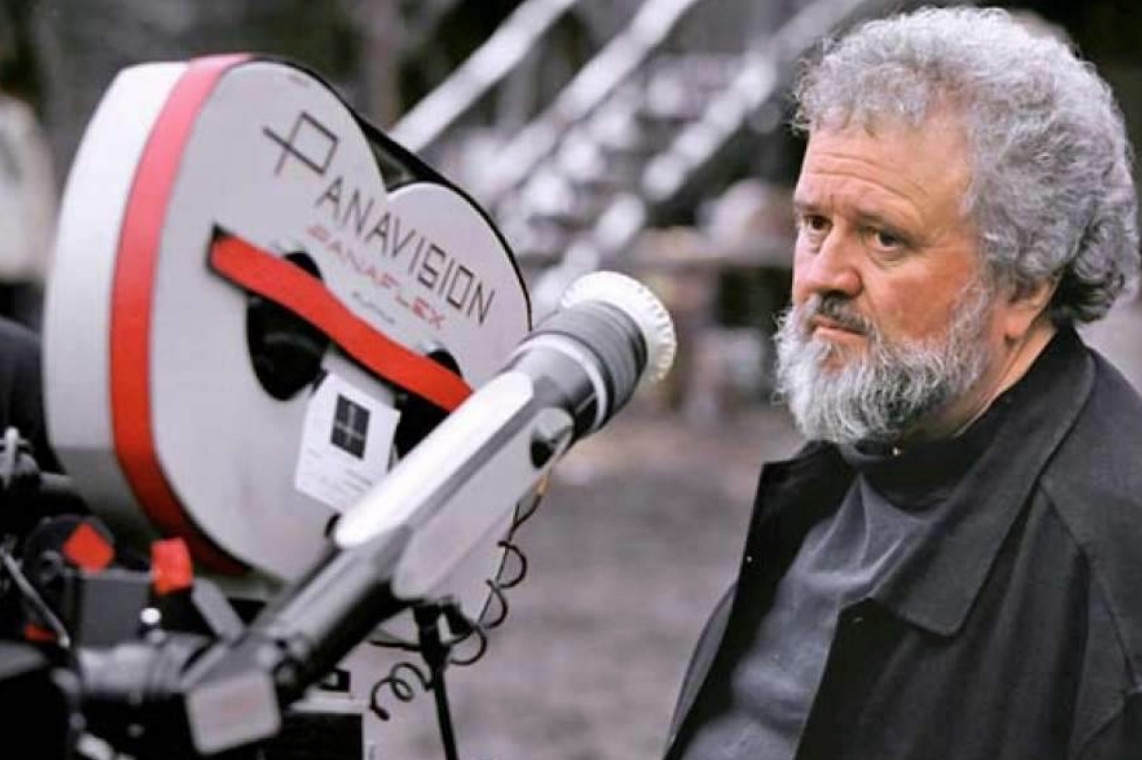
His final hours were spent at the Motion Picture & Television Country House and Hospital in Woodland Hills, his home for the last eight years. It is understood his death is Coronavirus related, making him the fourth resident of the facility to succumb to the virus.
Born John Allen Daviau on June 14 1942, the Louisiana native became enamoured with the moving image in the early days of colour television. In a 2004 interview with Moviehole, Daviau said, “I was 12 years old. I said, ‘I have to find out how that works’. The more I learned about photography, the more fascinated I was with the cinematographer, the director of photography and what that job was.”
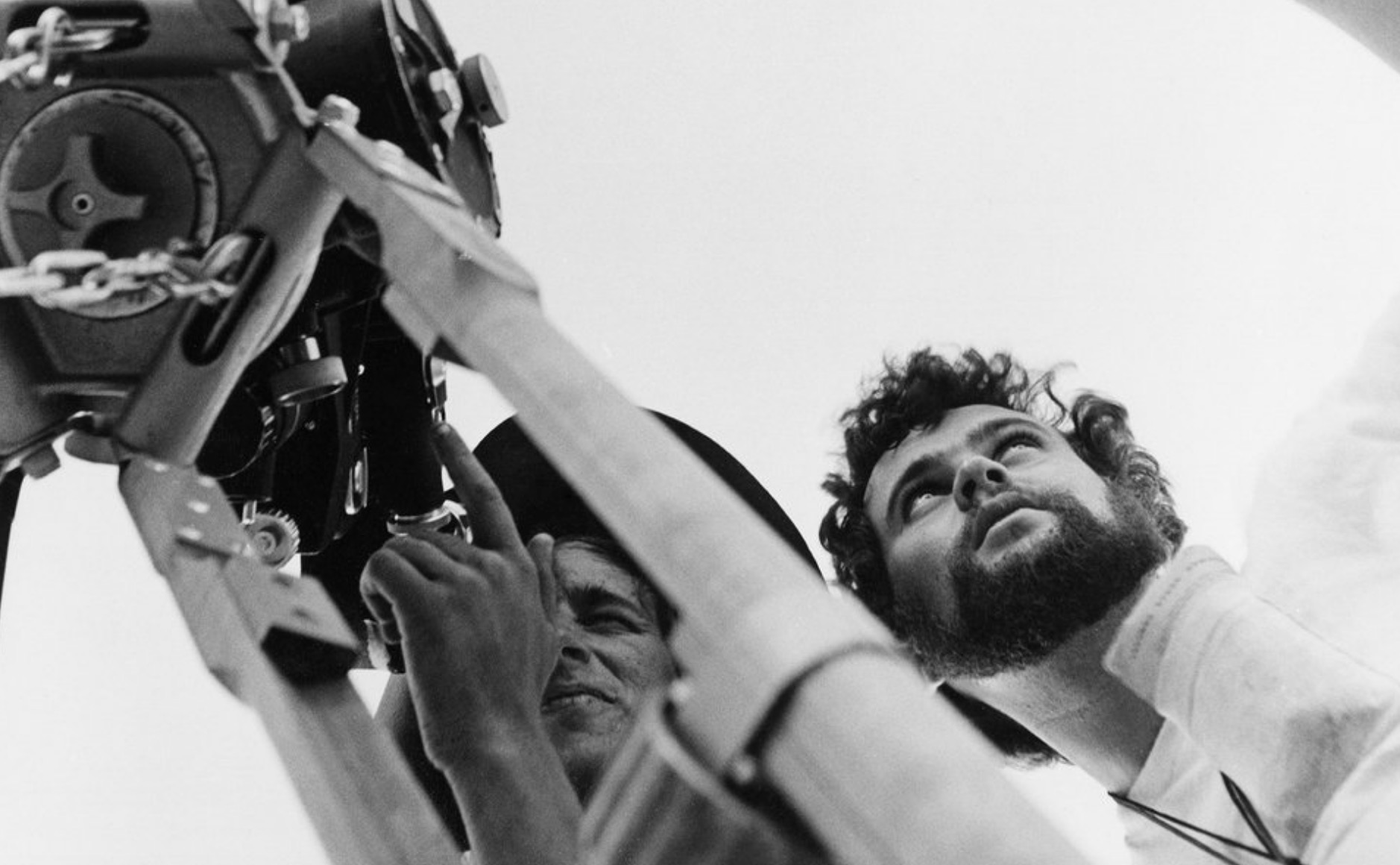 Daviau was mentored by fellow Loyola High School graduate and University of Southern California Cinema Department student Bob Epstein. “Epstein introduced me to filmmakers like De Sica, Fellini, Bergman, Bresson, Ozu, and Kurosawa,” Daviau recounted in an interview with MovieMaker magazine. At the age of 16, Daviau gained access to the set of One-Eyed Jacks, the directorial debut of Marlon Brando, and watched as cinematographer Charles Lang lit an enormous sound stage. “I thought to myself that this man has the very best job in the history of the world,” said Daviau.
Daviau was mentored by fellow Loyola High School graduate and University of Southern California Cinema Department student Bob Epstein. “Epstein introduced me to filmmakers like De Sica, Fellini, Bergman, Bresson, Ozu, and Kurosawa,” Daviau recounted in an interview with MovieMaker magazine. At the age of 16, Daviau gained access to the set of One-Eyed Jacks, the directorial debut of Marlon Brando, and watched as cinematographer Charles Lang lit an enormous sound stage. “I thought to myself that this man has the very best job in the history of the world,” said Daviau.
By the mid 1960s, with a 16mm Beaulieu camera by his side, Daviau became a sought-after cameraman in the music industry (he shot concert footage of The Animals and Jimi Hendrix) and the advertising sector. In 1968, the 25 year-old Daviau teamed with a young director named Steven Spielberg to shoot the now iconic short film, Amblin’. When Spielberg (pictured, above; with Daviau, right) was first contracted to Universal, he tried to bring his friend on board, and the studio sought to sign Daviau.
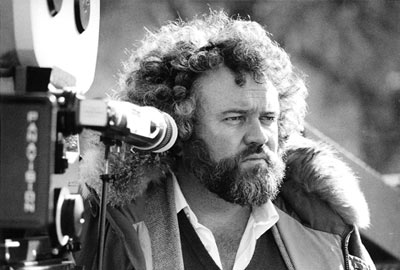 But the deal was struck down by the International Photographers’ Guild, the hardline cinematographers’ union that oversaw the sector at the time. Daviau recalled, “Back then the union was nepotistic and, if you didn't have a close personal contact, you just did not get in. It literally took me, and a handful of other now-prominent DP's - Caleb Deschanel, Tak Fujimoto, Andy Davis and others - a decade to gain entrance into the International Photographer's Guild. And, we finally had to file suit to get in.”
But the deal was struck down by the International Photographers’ Guild, the hardline cinematographers’ union that oversaw the sector at the time. Daviau recalled, “Back then the union was nepotistic and, if you didn't have a close personal contact, you just did not get in. It literally took me, and a handful of other now-prominent DP's - Caleb Deschanel, Tak Fujimoto, Andy Davis and others - a decade to gain entrance into the International Photographer's Guild. And, we finally had to file suit to get in.”
While Spielberg conquered the world, Allen Daviau spent the best part of the next decade shooting documentaries (including the Oscar-nominated Say Goodbye, in 1971) and made-for-television movies. He lensed three features - Richard Erdman’s western comedy The Brothers O’Toole (1973), Bob Hammer’s martial arts documentary New Gladiators (1973) and the Bruce Dern western, Harry Tracy, Desperado (1981) for William A. Graham - but honed his art and craft on short form work, including commercials and music videos.
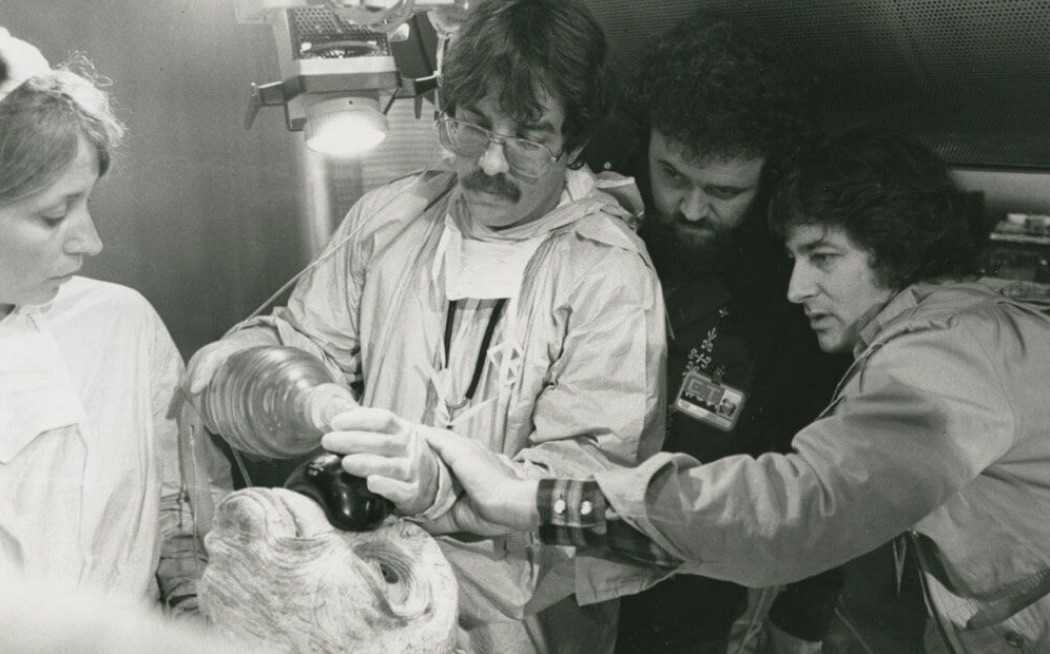 He reunited with his friend Steven Spielberg briefly mid-decade, when he shot the ‘Gobi Desert’ sequence of Close Encounters of The Third Kind for one of his idols, the film’s cinematographer Vilmos Zsigmond. But it would be 1981 when Spielberg and Daviau’s first feature film collaboration came together. Working from Melissa Mathison’s script, then titled ‘E.T. and Me’, Spielberg convinced a sceptical Universal he could make the film for US$10million. Recalls Daviau, in an interview for Henderson’s Film Industries, “I was lucky that it was such a low budget, because he was looking for someone who was fast and inexpensive, and there I was.” (Pictured, above; Daviau, with Spielberg, shooting E.T.)
He reunited with his friend Steven Spielberg briefly mid-decade, when he shot the ‘Gobi Desert’ sequence of Close Encounters of The Third Kind for one of his idols, the film’s cinematographer Vilmos Zsigmond. But it would be 1981 when Spielberg and Daviau’s first feature film collaboration came together. Working from Melissa Mathison’s script, then titled ‘E.T. and Me’, Spielberg convinced a sceptical Universal he could make the film for US$10million. Recalls Daviau, in an interview for Henderson’s Film Industries, “I was lucky that it was such a low budget, because he was looking for someone who was fast and inexpensive, and there I was.” (Pictured, above; Daviau, with Spielberg, shooting E.T.)
E.T. The Extra-terrestrial (1982) became the most successful film of all time and Daviau, with his first Oscar nomination under his belt, gained entry into the top-tier of Hollywood cinematographers. Of Daviau’s contribution to the alien’s lifelike appearance, Spielberg told American Cinematographer magazine in January 1983, “It took a lot more time to light E.T. than to light any of the human beings, and I think Allen spent his best days and his most talented hours in giving E.T. more expressions than perhaps (inventor) Carlo Rambaldi and I had envisioned. He found by moving a light, by moving the source of the key from half-light to top-light, E.T.’s 40 expressions were suddenly 80.”
His working relationship with his lifetime friend continued for another 15 years, with Daviau shooting the Spielberg-directed works ‘Kick the Can’ for Twilight Zone: The Movie (1983; he also shot Dr George Miller’s segment, ‘Nightmare at 20,000 Feet’); the Amazing Stories episode, ‘Ghost Train’; The Color Purple (1985), for which he earned his second Oscar nomination; and, Empire of the Sun (1987; pictured, below, with actor Christian Bale), again deemed Academy Award standard and for which he won the BAFTA Best Cinematography prize.
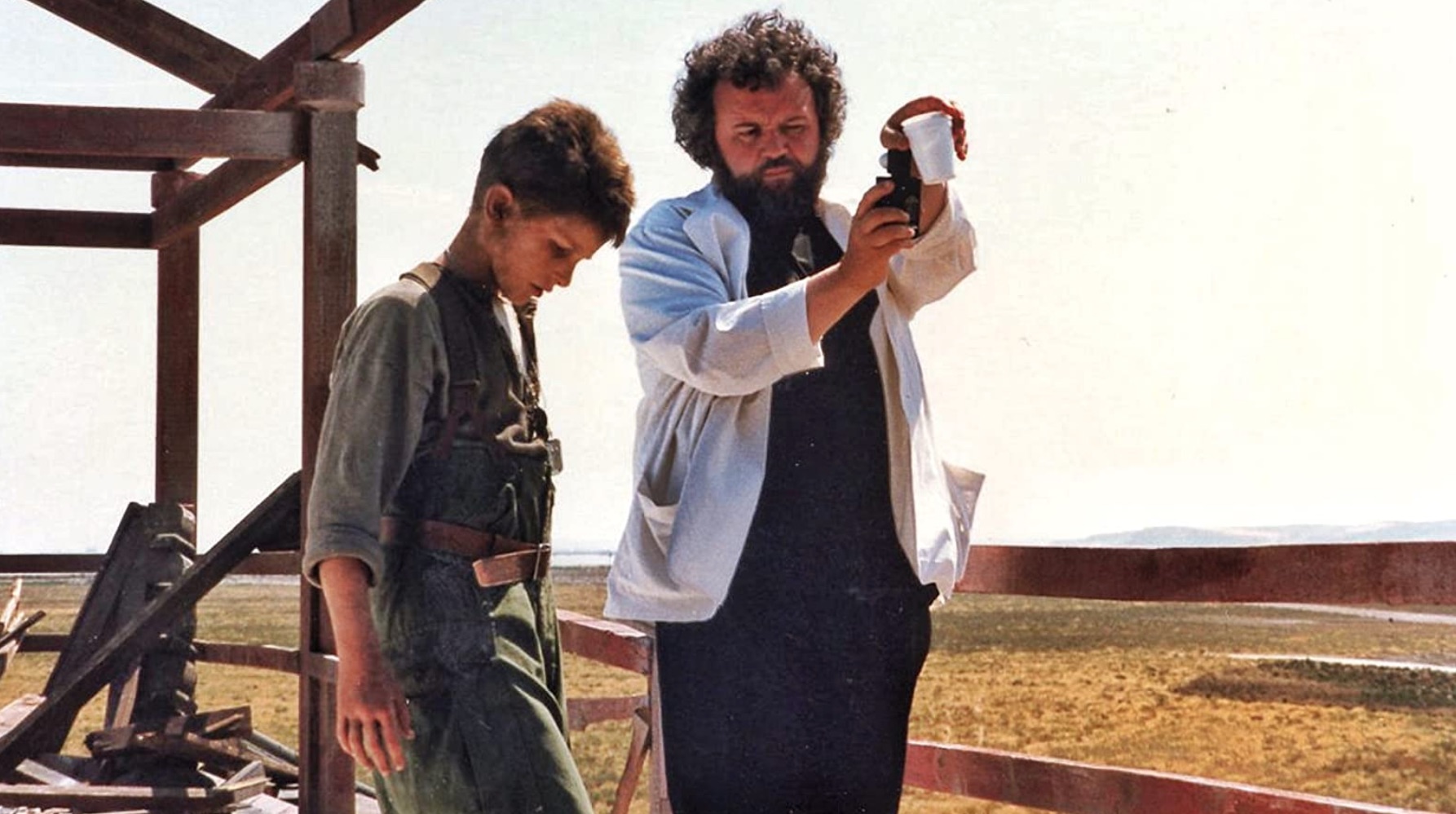 He also shot the Spielberg-produced adventures Harry and The Hendersons (1987) for director William Dear, and Congo (1995) for longtime Spielberg producer Alan Marshall. In 1985, he teamed with veteran director John Schlesinger for the politically-charged true story, The Falcon and The Snowman.
He also shot the Spielberg-produced adventures Harry and The Hendersons (1987) for director William Dear, and Congo (1995) for longtime Spielberg producer Alan Marshall. In 1985, he teamed with veteran director John Schlesinger for the politically-charged true story, The Falcon and The Snowman.
Allen Daviau’s mastery of source light and ethereal imagery came to the fore in three of the most beautifully shot films of the 1990s. He would earn his fourth Oscar nomination for his first collaboration with director Barry Levinson, on the director’s autobiographical drama Avalon (1990), and his fifth for Levinson’s gangster drama, Bugsy (1991), with Warren Beatty. In 1993, Australian director Peter Weir perfectly utilised Daviau’s visionary eye on what many consider his finest work, the PTSD drama Fearless, with Jeff Bridges. “We agreed that image clarity was the critical issue,” Daviau told the Cinephilia Beyond website. “I like images that are open and that speak very clearly photographically. This film is often a study of faces and eyes. Peter is very respectful of the power of close-ups. He speaks about that topic very eloquently, stating that even painters can’t equal the power of the motion picture close-up. We often came in a lot tighter than you normally see on close-ups, often using Jeff’s eyes to pull the audience into scenes.”
His diverse talent was utilised by writer/director Albert Brooks for the afterlife comedy Defending Your Life (1991) and by filmmaker Rand Ravich for the thriller The Astronaut’s Wife (1999), starring Johnny Depp and Charlize Theron. His final feature would be Stephen Sommer’s horror/adventure Van Helsing (2004), with Hugh Jackman.
In the wake of Daviau’s passing, Steven Spielberg released a short statement via his production company Amblin. “In 1968, Allen and I started our careers side by side. Allen was a wonderful artist but his warmth and humanity were as powerful as his lens. He was a singular talent and a beautiful human being.”








































































